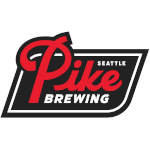In our IPA-centric universe, hops are like superheroes. Simcoe, Citra, Amarillo, Mosaic, and so on. Beer geeks know all the names and can rattle off the flavors and aromas imparted by each. But if hops are the quarterbacks, then grains are the offensive linemen. For each pound of hops, brewers use an exponential amount of grain. An IPA recipe might call for 30 pounds of hops and 1,000 pounds of malted barley. Hops are the haircut and the clothes, but barley is the backbone and the muscle.
While Washington farmers produce over 70 percent of the annual hop crop, just a small portion of the nation’s barley supply comes from Washington, and that comes from extremely eastern Washington. Most of the barley grown in the USA comes from Montana, North Dakota, and Idaho. A fair bit of the barley used by American brewers comes from Europe. At least that’s what I understand. I don’t proclaim to be a barley expert. Like the rest of you, I have trouble seeing beyond the glittering allure of the hops.
Barley talk is probably more interesting to brewers than it is to beer drinkers, but understanding a little bit about what goes into the beer makes it taste better. At least that’s what I believe and that is one of the foundations upon which this blog is built. In general, barley is produced on a very large scale. It is grown on huge, expansive farms and is then malted in large malting facilities. Like most things, barley is influenced by where it is grown. Barley grown in Montana will be different from barley grown in Western Europe. Some regions are better suited than others for the mass production of barley. Western Washington is not typically thought of as a great place to farm barley. Or is it?
Any beer you drink around here uses malted barley provided by one of a handful of producers. Speaking figuratively, many of our beers are built on a common foundation. Once again, I don’t proclaim to be an expert and am much better versed and hop-focused conversation, but that’s what I understand.
Here’s the news. Today some barley is being grown and malted in the Skagit Valley. This is interesting news and represents a noteworthy development in the world of craft beer and craft spirits, which also depends heavily on malted barley. Producing on a small-scale in an nontraditional location is not exactly unique, but it certainly is interesting. Why would you do it? What’s the point? Why is this news?
I want to share some information about Skagit Valley Malting Company that the Washington State University Mount Vernon Research Center shared with me. The following comes directly from Washington State University.
Terroir at the bar: Discovering western Washington grains in a glass
Demand for locally grown beer and booze has set the stage for craft brewing and distilling industries to capitalize on the flavors of western Washington wheat and barley.
“If you come to Skagit Valley to look at the tulips, you probably don’t notice that there are 15,000 acres of wheat and barley,” said Stephen Jones, wheat breeder and director of the Washington State University Mount Vernon Research Center. The grains are important rotation crops for maintaining soil health when grown between cycles of the vegetables and flowers that are the bread and butter of valley farmers.
The grains also embody the region’s terroir – flavors that reflect the unique soil, water and climate of a place. This has proven a revelation to farmers, chefs, millers, artisan bakers and craft brewers and distillers who, along with Jones, hope to usher in a renaissance of grain in western Washington.
The annual Cascadia Grains Conference (http://cascadiagrains.com) this weekend [actually, it was last weekend] will bring together farmers, processors and end-users – as well as investors, brokers and local government officials – to support rebuilding a grain economy west of the Cascade Mountains.
The heart and soul of beer
While the bread lab at WSU Mount Vernon recently has enjoyed the limelight among chefs and bakers nationally and internationally, craft brewers and distillers also are paying close attention to WSU’s research with grains grown in the region.
“Malted barley is the heart and soul of beer. So a prayer was answered when the Skagit Valley Malting Company was conceived – a local malting company geared for craft brewing,” said Charles Finkel, founder and owner of Pike Place Brewing Company, one of the first five microbreweries established in Washington in the late 1980s.
Cool nights, long summer days and rain mean that grains grown in western Washington don’t experience drought stress and therefore have a low protein content, said malting company co-founder Wayne Carpenter.
“This is wonderful for distilling and brewing,” he said. “Low protein grain can only be grown in six places in the world. One of them is here.”
Growing demand
Craft brewing has grown into an estimated $440 million (in 2012) industry in the state. Carpenter and Jones estimate the Skagit Valley could support double the grain that grows there now.
Skagit Valley Malting Company’s 11,000-square-foot malting facility, located just down the road from the WSU research center, is scheduled to come on line this year. It is designed to produce 2,500 to 3,000 tons per year of finished malt. This may sound like a lot, but according to Carpenter it would serve only 5 percent of the microbreweries in the state.
Meanwhile, total sales for the nascent craft distilling industry are estimated to be $9.2 million since 2011, when the Washington State Liquor Control Board began recording sales data.
The state allows small batch distilling (up to 60,000 gallons a year) and requires that 50 percent of the raw ingredients be grown in Washington, a rule intended to benefit farmers and the state economy.
Spirits of experimentation
The family-owned Westland Distillery in Seattle is the first single malt whiskey distillery in Washington and the largest in North America, producing 1,200 liters daily, six days a week.
President and co-founder Emerson Lamb said it is important that his product reflect its place of origin: “That’s why we’re really excited to work with Skagit Valley Malting. We can be hyper-local with flavor.”
Roasting and kilning the grain in the malting process is what creates the palette of flavors a distiller can work with, Lamb said. But climate and grain variety affect kernel size and husk thickness, he said, and these contribute to flavor in whiskey.
As a small distiller, Lamb has the flexibility to produce single batch, single varietal or even single farm whiskeys. He embraces a spirit of experimentation and is grateful to find that same spirit at WSU Mount Vernon.
“We see science and academia pushing the envelope in terms quality and consistency,” he said. “What’s so exciting about that is that whiskey is ready for it.”
Expanding possibilities
Jones and his research team are using traditional breeding methods to develop and test contemporary and historic varieties of wheat, barley and oats. They are developing grain varieties that are not only suited to the maritime climate of the Skagit River delta, but that offer unique qualities that commodity grain production has left behind.
“It’s changing the way we look at grains here in the valley,” said Dave Hedlin, an organic and conventional vegetable grower in La Conner, Wash. “Now it’s, ‘How can you grow it, organically or conventionally, to get these attributes that are desirable?’ ” He said he is thrilled to have more market options for his grain crops.
Jones and Carpenter envision a western Washington grain economy that offers more options for everyone. With a strong desire to create market alternatives that are tied to place, the components are lining up – research to produce and test grains that farmers can grow for added value, more varieties brewers and distillers can select for custom malting, passionate entrepreneurs along the supply chain and the resulting libations that impart local flavor and pride of place.

































